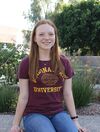BME100 s2017:Group10 W8AM L6
| Home People Lab Write-Up 1 | Lab Write-Up 2 | Lab Write-Up 3 Lab Write-Up 4 | Lab Write-Up 5 | Lab Write-Up 6 Course Logistics For Instructors Photos Wiki Editing Help | ||||||
OUR COMPANY:
Our Brand Name: FluoriCam LAB 6 WRITE-UPBayesian StatisticsOverview of the Original Diagnosis System
Bayes statistical analysis was used in this lab to show whether this approach is an accurate and reliable one for testing for diseased SNPs. The results for calculation 1 and 2 indicated that this test was very reliable and could be accurately used to test whether or not a patient had the target SNP disease or not. This can be concluded because the Bayes statistical calculations indicate a high correlation between receiving a positive result and a positive conclusion. The results for calculation 1 fell between 70% and 80%, which meant that there is about ¾ probability of the patient having both a positive result and a positive conclusion of SNP disease. For calculation 2, it was in between 80% and 90%, which meant the probability of receiving a negative result with a negative conclusion was higher. The results for calculations 3 and 4 did imply reliability of the PCR predicting whether the patients will be developing a disease or not. For calculation 3, the results were range in between nearly 90%. One human error that could have happened was that there was too much light exposure while taking the pictures of the drops, due to forgetting to close the lightbox or not focusing the camera correctly. Another human error would be not having the light correctly align to the drop on the slide or missing part of the drop. A human error that might have occurred would also be not transferring the same amount of PCR products into all tubes for some there was a little less than others. Intro to Computer-Aided Design3D Modeling The software that our team used to design our product was TinkerCAD. We found that it was much easier and simpler than SolidWorks. TinkerCAD has a simple menu, easy editing options, and preset shapes, which makes the software a lot more user-friendly than SolidWorks. It took less time to create our product using TinkerCAD than it would have if we were to use Solid Works. Not everyone has a lot of experience using SolidWorks, and it is a complicated software that can be frustrating to use. Another great thing about TinkerCAD is that it is free and it does not need to be downloaded, which made it easy for everyone in our lab group to work on the design. Our Design Our design is different from other designs in that it includes a built in camera instead of having to use a cell phone. Also, our product includes four slides instead of one. This allows the user to take pictures of multiple samples in one sitting and will decrease the amount of time using the machine. Feature 1: Consumables“Very important” consumables are items that must be included in the package in order for it to work properly. For example, in the fluorimeter that we used, a camera was not included in the package because a smartphone could be used, but a smartphone dock was included so the phone could be properly positioned. Some very important consumables that will be included in our package are the fluorometer slides, the standard micropipette, a box of spare pipette tips, SYBR I Green solution, the built-in camera, the light box, and a charger for the machine and camera. These have to be included for the user to be able to use the fluorometer system correctly.
Feature 2: Hardware - PCR Machine & FluorimeterPCR MACHINE
FLUORIMETER:
| ||||||






